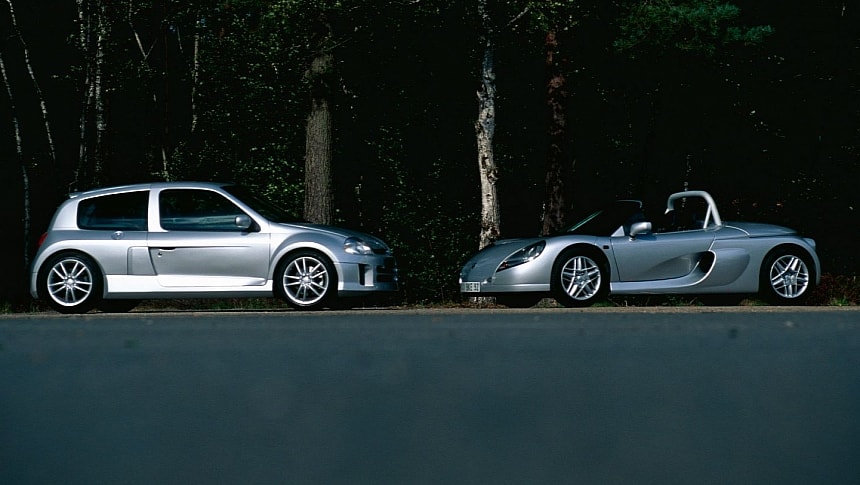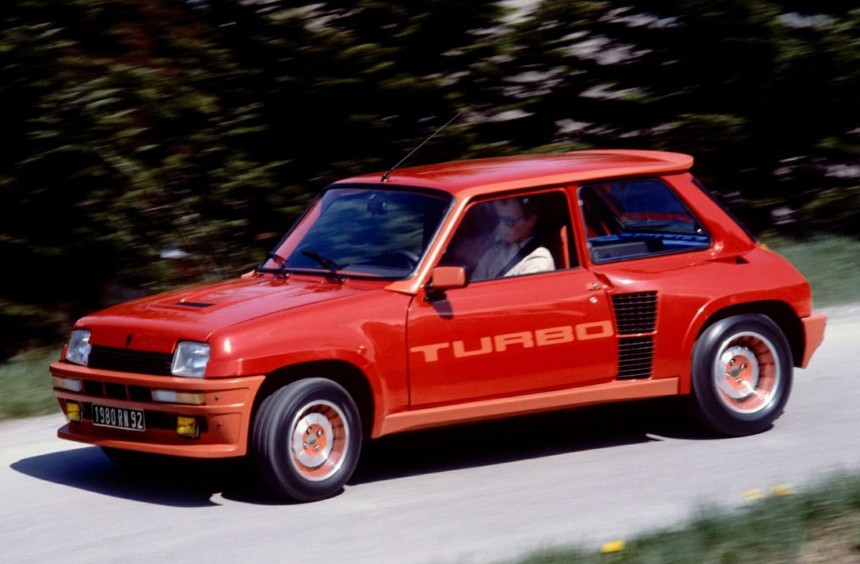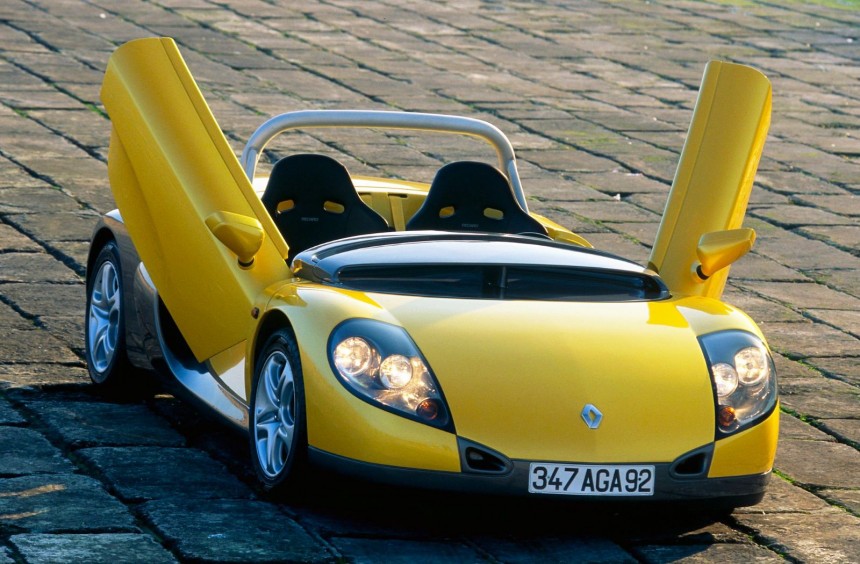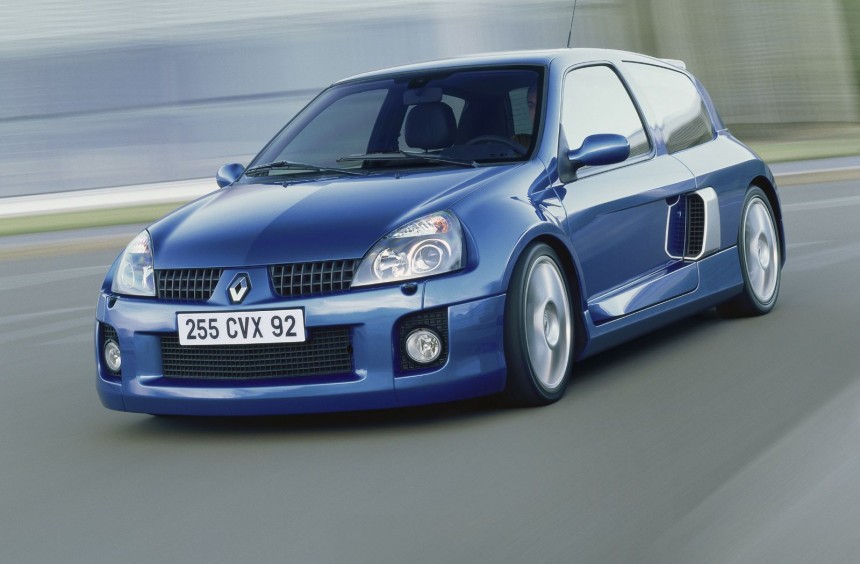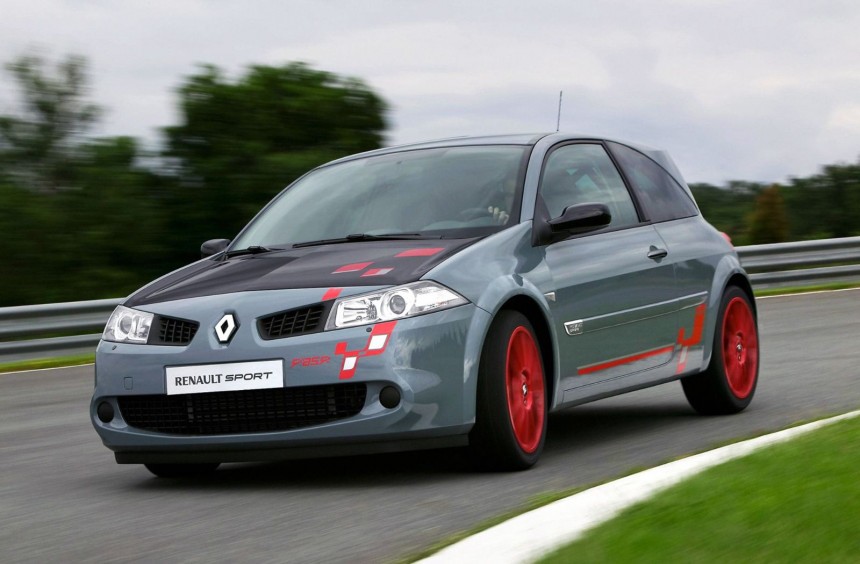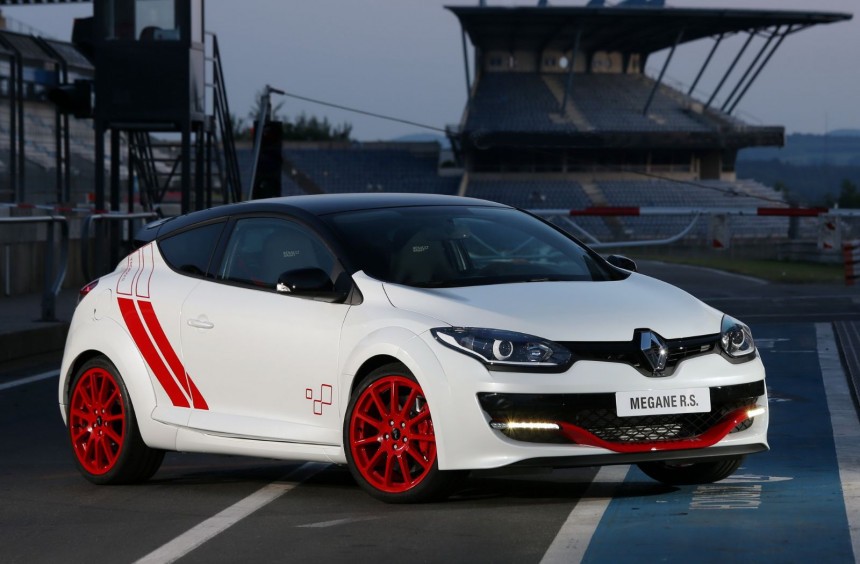Though never as famous as BMW's M division or Mercedes-Benz's AMG, Renault's motorsport, performance, and special vehicles department has produced some legendary street-legal machies throughout its history.
Founded in 1976 as Renault Sport Technologies, the division replaced Alpine as the carmaker's motorsport arm.
Its main focus was Formula 1, where the French brand became a force during the 1990s when it won six consecutive manufacturers' championships alongside Williams.
Renault Sport also competed in rallying, offroading, and, more recently Formula E, but it also developed several high-performance road cars that became legendary.
One of the first, most impressive road-legal models developed by Renault Sport was the R5 Turbo.
Though it shared the same name and looked much like the plebian Renault 5 (Le Car in the US) subcompact, the Turbo ditched the front, transversely-mounted naturally aspirated inline-four and FWD drivetrain in favor of an RWD, longitudinal mid-engine layout.
Released in 1980, the R5 Turbo was created with the help of Bertone's Marc Deschamps and Marcello Gandini to homologate a mid-engine design for the WRC, but the car failed to impress on the rally world's brightest stage.
However, the road-gooing version with its 158-hp turbocharged inline-four became one the most insane hot hatches ever produced.
During a four-year run, Renault Sport built 4,987 R5 Turbos, and today, surviving examples demand over $100,000.
After discontinuing the R5 Turbo, Renault Sport took a short break from developing road cars.
Nevertheless, in the first part of the 1990s it kicked off a project aimed to produce a pure driver's car from scratch.
Unveiled at the 1995 Geneva Motor Show, the car dubbed Spider took everyone by surprise.
Designed by Renault's Patrick Le Quément, the Spider looked more like a mix between a Lotus and a Porsche than any of the carmaker's production models.
Based on a lightweight aluminum chassis, the sports car was only available in open-top guise, with or without a windshield, and no roof - be it foldable or hardtop - was ever offered.
Tipping the scales around 2,100 pounds (952 kg), the plastic-bodied mean machine was powered by a 148-hp 2.0-liter four-pot mounted between the passenger compartment and the rear axle.
Produced from 1996 to 1999 in approximately 1,640 units, the Spider also became a legitimate race car in a one-make series called Spider Trophy.
Apart from becoming one of the most epic Renault Sport models of all time, the Spider also holds the distinction of being the first car developed from scratch by the motorsport division and the first to be marketed under the Renault Sport moniker.
While the Spider was a terrific Renault Sport machine, the R5 Turbo continued to enjoy God-like status among the brand's enthusiasts as well as its inner ranks.
Therefore, in 1999, Renault Sport developed a spiritual successor. At first, the V6-powered mid-engine beast, loosely based on the Mk II Clio, was purely a race car that competed in the Clio V6 Trophy series that replaced the Spider Trophy.
But in 2001, Renault decided to give its fans the street-legal version they were dreaming about.
Like the initial race car, the road-going model featured a mid-mounted, 24-valve V6 borrowed from the PSA Group (Peugeot and Citroën), but it was limited to 227 hp.
Still, the rabbit hatchback could sprint to 60 mph (97 kph) from a standstill in 6.2 seconds and reach a top speed of 146 mph (235 kph).
It was produced from 2001 to 2005 in two phases. The first (2001-2003) was based on the original Mk II Clio, while the second (2003-2005) resembled the facelifted version and gained an additional 80 hp, which, despite the heavier curb weight, made the car sensibly faster.
From 2004 onwards, Renault Sport began developing performance versions of the second-generation, two-door Megane hatchback, and four years later, the most impressive of these models was launched.
Dubbed R26.R, the track-focused yet very much street-legal hot hatch was based on the previous 230 Renault F1 Team R26, but, as the R in its name indicates, it was more race-ready than ever.
Like the original R26, conceived to celebrate Renault's triumph in the 2005 and 2006 Formula 1 seasons, the R was powered by a 2.0-liter turbocharged four-cylinder rated at 227 hp and featured many chassis upgrades.
However, this new version was 271 pounds (123 kg) lighter thanks to the removal of features like the radio/CD player, rear bench seat, passenger and curtain airbags, fog lights, and many other things deemed unnecessary on the track.
Moreover, it gained stiffer shocks and springs, grooved brake rotors, new alloy wheels, a carbon fiber hood, a new rear spoiler, Sabelt bucket seats with six-point harnesses, and an optional roll cage.
The 911 GT3 RS of the Megane range, the 2008 R26.R, was produced in only 450 examples, one of which lapped the famous Nurburgring Nordschleife in 8 minutes and 17 seconds - faster than the Porsche Cayman S and, more impressive, faster than any FWD production car.
Although a more impressive high-performance Megan followed, for many of the brand's enthusiasts, the R26.R remains the most epic high-performance FWD Renault ever built.
That more impressive version of the Megane came in 2014 as Renault Sport was determined to retake the Nurburgring FWD production car record from SEAT and its Leon Cupra 280.
Based on the latest third-generation Megane, the Trophy-R was powered by a 271-hp turbocharged four-pot and featured many unique features such as an Akrapovic titanium exhaust system, Öhlins shocks with Allevard coil springs, the largest front brake rotors ever fitted onto a Megane, 19-inch Speedline Turini wheels wrapped in Michelin Pilot Sport Cup 2 tires, and Recaro bucket seats with Sabelt competition-spec harnesses.
Like the R26.R, it received an extensive weight-saving treatment that saw its rear bench seat, A/C, multimedia system, or soundproofing removed.
All that allowed the stock Trophy-R to lap the Nurburgring in 7 minutes and 54 seconds and retake the FWD production car record.
In addition, this epic hot hath produced in 500 units went on to set multiple track records at venues such as Spa or Suzuka, becoming one of the most epic production cars ever developed by Renault Sport.
Its main focus was Formula 1, where the French brand became a force during the 1990s when it won six consecutive manufacturers' championships alongside Williams.
Renault Sport also competed in rallying, offroading, and, more recently Formula E, but it also developed several high-performance road cars that became legendary.
Renault 5 Turbo
Though it shared the same name and looked much like the plebian Renault 5 (Le Car in the US) subcompact, the Turbo ditched the front, transversely-mounted naturally aspirated inline-four and FWD drivetrain in favor of an RWD, longitudinal mid-engine layout.
Released in 1980, the R5 Turbo was created with the help of Bertone's Marc Deschamps and Marcello Gandini to homologate a mid-engine design for the WRC, but the car failed to impress on the rally world's brightest stage.
However, the road-gooing version with its 158-hp turbocharged inline-four became one the most insane hot hatches ever produced.
During a four-year run, Renault Sport built 4,987 R5 Turbos, and today, surviving examples demand over $100,000.
Renault Sport Spider
Nevertheless, in the first part of the 1990s it kicked off a project aimed to produce a pure driver's car from scratch.
Unveiled at the 1995 Geneva Motor Show, the car dubbed Spider took everyone by surprise.
Designed by Renault's Patrick Le Quément, the Spider looked more like a mix between a Lotus and a Porsche than any of the carmaker's production models.
Based on a lightweight aluminum chassis, the sports car was only available in open-top guise, with or without a windshield, and no roof - be it foldable or hardtop - was ever offered.
Tipping the scales around 2,100 pounds (952 kg), the plastic-bodied mean machine was powered by a 148-hp 2.0-liter four-pot mounted between the passenger compartment and the rear axle.
Produced from 1996 to 1999 in approximately 1,640 units, the Spider also became a legitimate race car in a one-make series called Spider Trophy.
Apart from becoming one of the most epic Renault Sport models of all time, the Spider also holds the distinction of being the first car developed from scratch by the motorsport division and the first to be marketed under the Renault Sport moniker.
Renault Sport Clio V6
Therefore, in 1999, Renault Sport developed a spiritual successor. At first, the V6-powered mid-engine beast, loosely based on the Mk II Clio, was purely a race car that competed in the Clio V6 Trophy series that replaced the Spider Trophy.
But in 2001, Renault decided to give its fans the street-legal version they were dreaming about.
Like the initial race car, the road-going model featured a mid-mounted, 24-valve V6 borrowed from the PSA Group (Peugeot and Citroën), but it was limited to 227 hp.
Still, the rabbit hatchback could sprint to 60 mph (97 kph) from a standstill in 6.2 seconds and reach a top speed of 146 mph (235 kph).
It was produced from 2001 to 2005 in two phases. The first (2001-2003) was based on the original Mk II Clio, while the second (2003-2005) resembled the facelifted version and gained an additional 80 hp, which, despite the heavier curb weight, made the car sensibly faster.
Renault Megane RS R26.R
Dubbed R26.R, the track-focused yet very much street-legal hot hatch was based on the previous 230 Renault F1 Team R26, but, as the R in its name indicates, it was more race-ready than ever.
Like the original R26, conceived to celebrate Renault's triumph in the 2005 and 2006 Formula 1 seasons, the R was powered by a 2.0-liter turbocharged four-cylinder rated at 227 hp and featured many chassis upgrades.
However, this new version was 271 pounds (123 kg) lighter thanks to the removal of features like the radio/CD player, rear bench seat, passenger and curtain airbags, fog lights, and many other things deemed unnecessary on the track.
Moreover, it gained stiffer shocks and springs, grooved brake rotors, new alloy wheels, a carbon fiber hood, a new rear spoiler, Sabelt bucket seats with six-point harnesses, and an optional roll cage.
The 911 GT3 RS of the Megane range, the 2008 R26.R, was produced in only 450 examples, one of which lapped the famous Nurburgring Nordschleife in 8 minutes and 17 seconds - faster than the Porsche Cayman S and, more impressive, faster than any FWD production car.
Although a more impressive high-performance Megan followed, for many of the brand's enthusiasts, the R26.R remains the most epic high-performance FWD Renault ever built.
Renault Megane RS Trophy-R
Based on the latest third-generation Megane, the Trophy-R was powered by a 271-hp turbocharged four-pot and featured many unique features such as an Akrapovic titanium exhaust system, Öhlins shocks with Allevard coil springs, the largest front brake rotors ever fitted onto a Megane, 19-inch Speedline Turini wheels wrapped in Michelin Pilot Sport Cup 2 tires, and Recaro bucket seats with Sabelt competition-spec harnesses.
Like the R26.R, it received an extensive weight-saving treatment that saw its rear bench seat, A/C, multimedia system, or soundproofing removed.
All that allowed the stock Trophy-R to lap the Nurburgring in 7 minutes and 54 seconds and retake the FWD production car record.
In addition, this epic hot hath produced in 500 units went on to set multiple track records at venues such as Spa or Suzuka, becoming one of the most epic production cars ever developed by Renault Sport.
